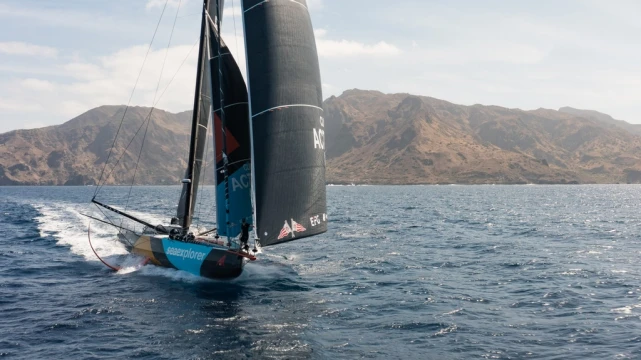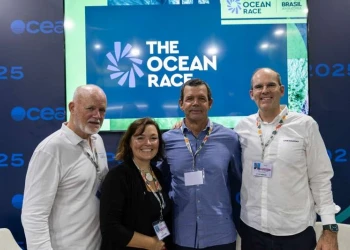
The Ocean Race, 11 critical choices for each team
The Ocean Race, 11 critical choices for each team
Sails are the engine of the boat and are designed to within a millimetre of specification. Not only do they have to be the right size and shape, but they need to be reliable and durable. Most of the sails will need to last a full circumnavigation of the planet.
Sails are also expensive, which is why the IMOCA Class and The Ocean Race rules place a maximum limit on the number of sails permitted during the race.
Thomas Jullien, IMOCA Class Measurer, explains the limits: “As per the IMOCA class rule, they are allowed to sail with a maximum of eight sails on board, one of which has to be the storm jib, which is mandatory. Then there is a rule specific to The Ocean Race, which is that each team is allowed to use a total of 11 sails plus the storm jib for the whole round the world race.”
The storm jib is a tough, tiny triangle of sail cloth that is designed to take the worst of beatings in extremely windy conditions. There may be times when the boats are flying the storm jib only, in apocalyptic conditions that they’d rather not be caught in, but which they might well encounter in the Southern Ocean for example.
Storm jib aside, all the other sails are designed and built for top-end speed as opposed to pure survival. “You have some obvious ones, which are the mainsail and the J2 and J3 headsails,” says Jullien. “These are not strictly mandatory, but nobody goes without them."

A limit of 11 sails doesn’t leave much room for spares, which is why every sail needs to be robust enough to take the boat all the way around the world. If a mainsail is destroyed beyond repair, then a team would have no choice but to measure in a new replacement. To have already measured in their full quota of sails and have no mainsail backup would be a competitive catastophe.
Occasionally in sailing, someone comes out with a breakthrough design, a ‘magic bullet’ that no one else has thought of. Even if Jullien has seen such a sail, as the class measurer he is required to be discreet. The details of each sail inventory remain confidential to each team. “Someone might ask me to stamp a crazy sail in Cape Town and it will be interesting to see if the sails are becoming more and more specialised,” he speculates.
“There is no magic involved there, however. The more you specialise in a sail for one condition, the less good it becomes in other conditions. So far, I don't think anybody has invented a magic sail that's perfect in all conditions. So it's really a choice about which condition you think you will encounter and how specialised for those conditions you want your sails to be. Or do you want sails with a wider range of wind speeds and angle, and which will allow you to change less as the wind and wave conditions change?”
In other words, everything about sail design is a compromise. The generally accepted solution is to aim for good all-round speed in a range of conditions and a range of sailing angles, rather than aim for a particular sweet spot.
Another compromise is how sturdy to make your sails. A stronger sail is generally a heavier sail, great for big breeze and tough conditions, not so great for the softer breeze when a lighter sail will fly better than a heavy one. As Team Malizia’s Will Harris explains, the German team is very comfortable with its choice to go heavier than average. “We saw other teams struggling with sail damage on Leg 2 and we managed to avoid any of that,” says the British sailor. “We think our choice to go for slightly heavier sails will probably be good for Leg 3 too.”

Sail preservation is at the top of every team’s agenda, as Jullien explains. “I think one way of understanding this is what happened to GUYOT environnement - Team Europe on the very early inshore part of the first leg in Alicante where they had this furling problem with the J-0 sail. If it was grand prix racing or a short race, you would have unfurled and refurled the J-0 on the same wind angle. [You would take the risk of] not altering course downwind, but pulling really hard [until the bad furl came out]. You don't want to do this on the first leg of The Ocean Race. Instead you go dead downwind, you unfurl the sail without any load on it, you make sure it’s refurled properly, then you get back on track and into the race again. It’s slow, but it helps preserve the sail. It’s an important change of mindset.”
And when the sail does get damaged, being able to make an effective repair, initially at sea, and eventually ashore during a stopover, is critical. Certainly the sailmakers have been busy in Cape Town ensuring each team in the fleet leaves the dock for the longest leg in the history of the Race with a full wardrobe of effective and efficient sails.
The next leg is sure to test both people and equipment as never before, and it will be worth keeping an eye on how the teams handle their sail inventory over more than a month at sea.






